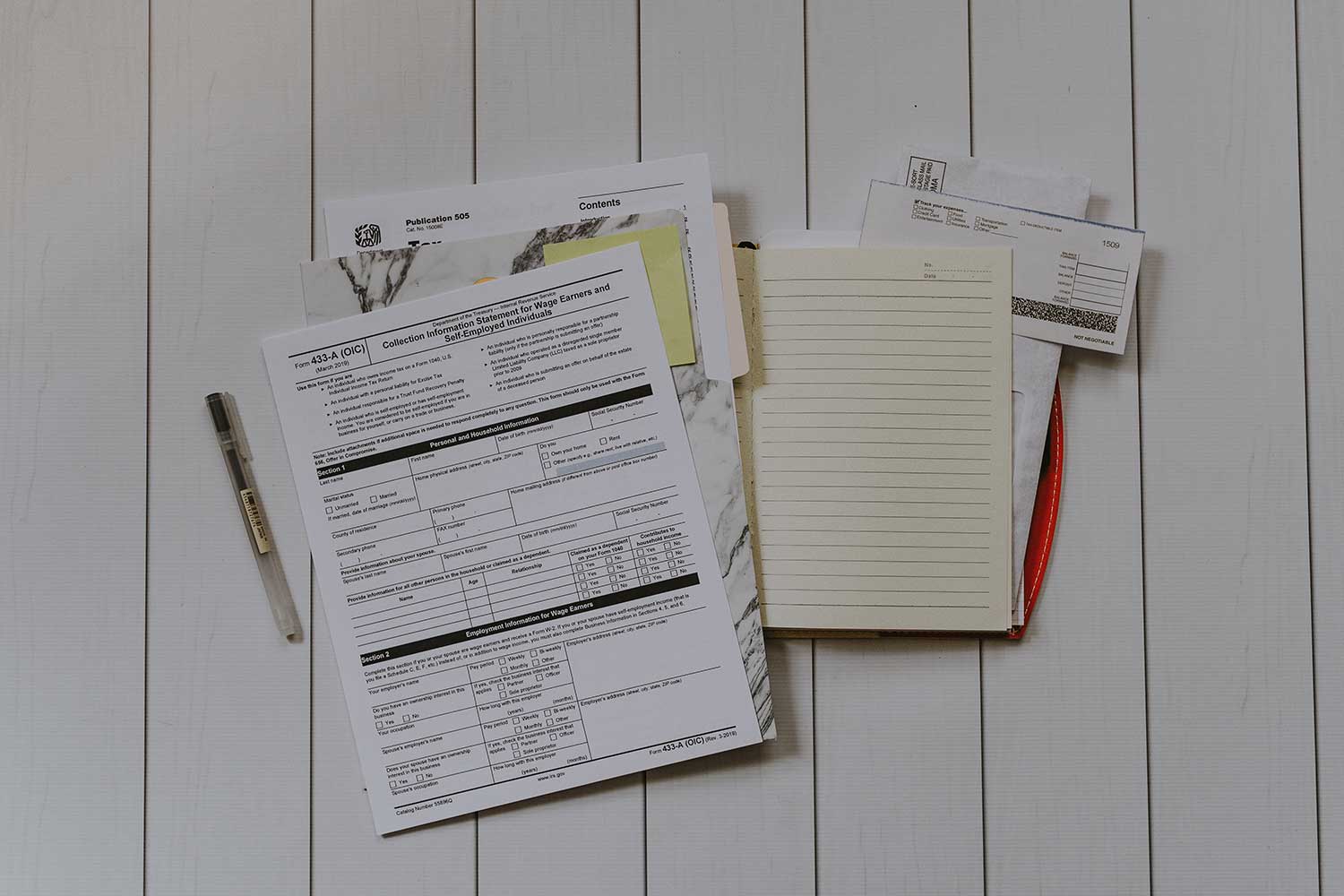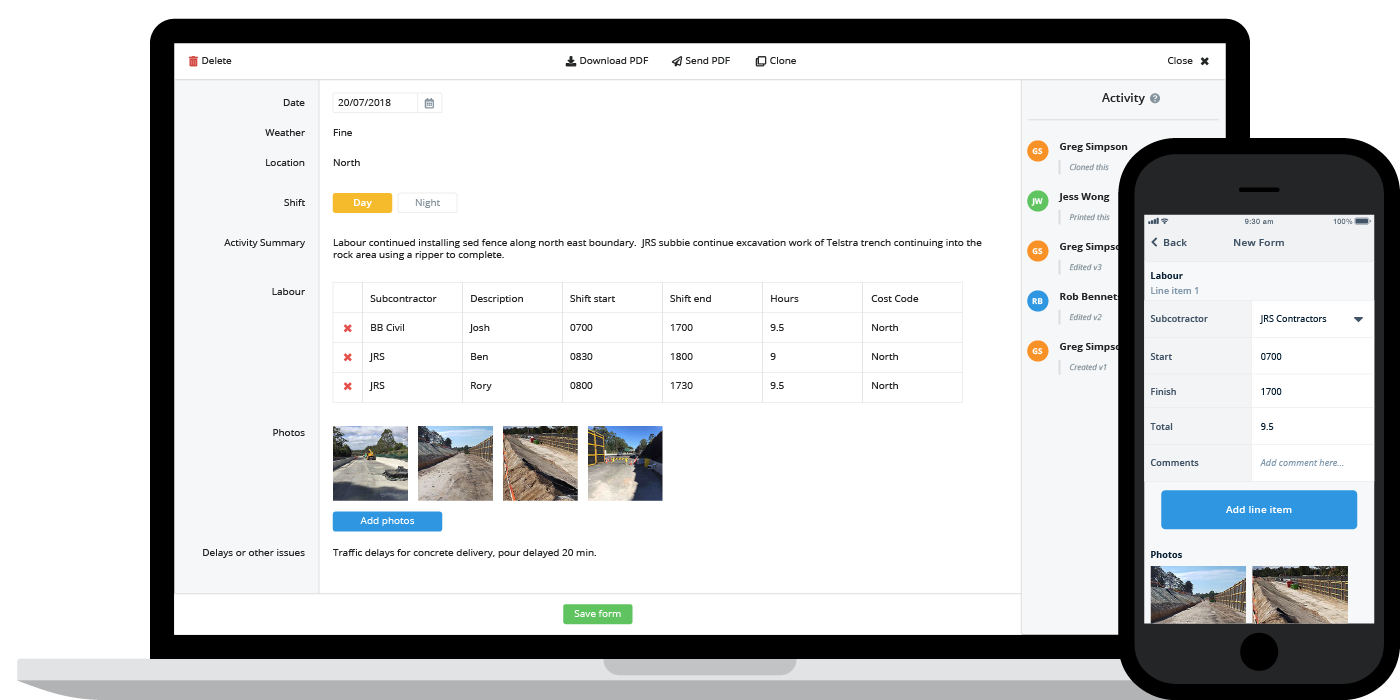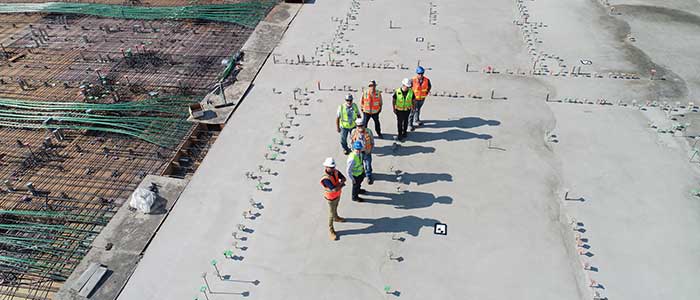Construction paperwork organisation

Construction paperwork organisation: Here's how to get properly organised
The problem with construction paperwork organisation today
The construction industry and construction companies have to deal with a lot of paperwork. Managing even a basic project involves safety documentation, quality, environmental, financial and commercial paperwork. On large scale projects, all of these functions across hundreds or thousands of workers results in thousands of pieces of paper - not to mention other records like photos, videos and correspondence.
Because of all of this, construction paperwork organisation is hard work. And it's hard work even with the best systems and processes in place. Many companies are still relying on traditional document and paperwork formats like word, excel and PDF. While comfortable and well-known, these tools weren't designed for field based document management, collaboration between multiple construction parties and integrated data management.
In fact, these old traditional formats are the main problem with construction paperwork organisation today.
Editing templates and paperwork fields in word, converting those templates into PDF format to share with clients, and reconciling all of this info manually into excel sheets is time-consuming and costly. And then there is the physical paperwork too, with workers carrying around sheets, scanning them to hard drives and sending them back and forth via email.
This type of poor construction paperwork organisation increases risk and slows down communication and understanding, meaning projects and project personnel can't react quickly and make informed decisions.
Poor construction paperwork organisation results in poor project management. Paperwork/documentation is how people in the construction industry communicate progress, issues and all other necessary interactions.
Without good paperwork organisation, all of these things fall apart, for each company internally and for the wider construction industry at large.
But what can we do about construction paperwork organisation today?
How to get construction paperwork organisation right
It doesn't take too much time in walking through a normal construction office to quickly gauge that construction paperwork organisation isn't typically done that well.
Reams of paper strewn over desks, big bulky project folders with critical data stored in physical locations and other less than ideal paperwork organisation.
The way to eliminate these issues and the way to get construction paperwork organisation right is of course to digitise this information in a way that it can be accessed, stored, organised and shared - all digitally.
Luckily it's been a long time since word, excel and PDF were the most advanced paperwork tools and formats on the market. Today, the construction industry has access to many digital tools and systems which enable them to streamline their paperwork both in the office and on site.
An example of construction paperwork done right in 2020
While there are hundreds of different processes like toolbox talks, safety permits, quality checklists, construction timesheets and more, the nature of how the paperwork functions is very similar:
- The types of project and work the company engages in dictates the type of paperwork required from a regulatory and operations standpoint
- The company as well as regulation dictate what information needs to be captured inside each document or process
- The site or field workers as well as some office workers fill out these document templates and frameworks to document what needs to be documented on each project
Because of the consistent nature of construction paperwork, we can drill down into a single piece of paperwork to understand how this type of good construction paperwork organisation works for a single process, and then scales out across all processes.
A construction site diary is a good single use case to explore. One of the most commonly used pieces of construction paperwork, how a company manages their diaries is often indicative of how it manages and organises all of its paperwork.
A good process will involve no word docs, no excel spreadsheets and no pieces of physical paperwork or books.
Good construction paperwork organisation here will simply involve establishing a digital diary format, making that diary accessible via mobile, tablets and computers, and then some smarts in the background to manage diary storage and databasing.
Truly digital formats don't need to be converted back and forth between systems, they are created to be digital and are only converted into a static format like PDF as a final report or presentation.
As you can imagine, when construction paperwork is organised like this, companies eliminate the slow and messy movement of paper as well as the long term storage of critical data.
it's all stored online where it can be found at any time, and it's all digital. This can save companies and administrators hundreds of hours of data communication and reconciliation and ensures all records are organised and stored properly.
This is good construction paperwork organisation.

Learn more about digital site diaries here.
Managing the change associated with going digital
Probably the biggest roadblock for improving construction paperwork organisation today is change management and sunk costs.
Moving away from what is known and comfortable does take some effort, and very often some real friction.
But with paperwork, the new methods and solutions like we touched on above are simply much better - and the friction associated with moving away from physical paperwork and traditional docs is getting constantly lower.
Converting existing processes into digital formats before, and digital formats are becoming easier to use than ever before. One of the most common arguments against moving towards tools and technologies has been the older guys on the construction site adapting, but these guys are using smart phones too, and modern apps which improve their daily lives and tasks.
Construction paperwork organisation is always going to be a challenge, but there are pretty simply ways that you can become more organised. And better organisation in the case of construction companies means better access to key project information and better access to historical records - which means better project outcomes and more money in the bank.
To see how easy it is to start digitising your IMS, have a browse here.

